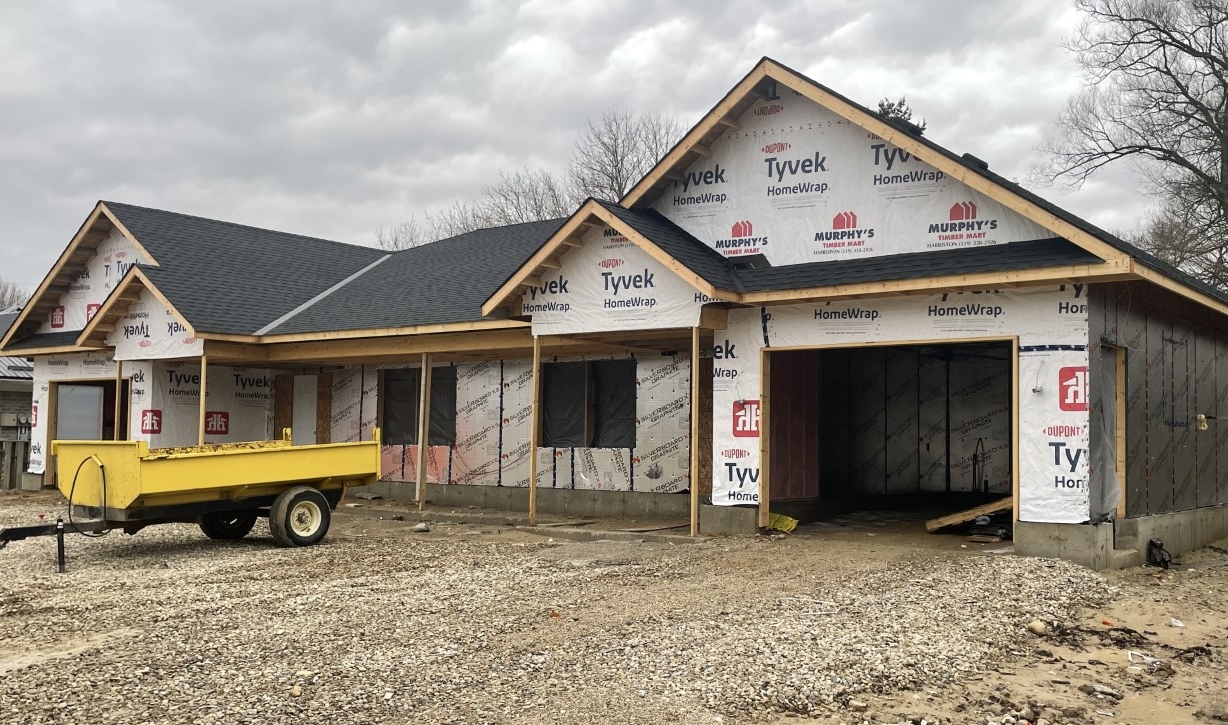WELLINGTON COUNTY – Officials here say the local housing situation has reached “crisis” level and the county has launched a public awareness campaign as part of an effort to turn the tide.
“As with many communities across Ontario, Wellington County is at a crisis point when it comes to having the rental and ownership housing options that are necessary to sustain the region’s changing needs and required growth,” states a March 24 press release from the county.
By 2051, provincial legislation requires the county to reach a population of at least 160,000 people and provide at least 70,000 jobs. Having enough housing to accommodate this growth is key, officials note.
This week the county launched a community awareness campaign aimed at furthering public understanding of the range of options that can be considered to meet these needs.
“Already, the situation is critical,” the release states, noting the median home price in Centre Wellington has increased more than 235 per cent in five years, significantly higher than income growth over that period.
Jana Burns, Wellington Place Administrator, Museum, Archives and Economic Development, points out the average sale price of a home in Wellington County was just over $820,000 in November.
While that number “seems decent now if you consider how high prices escalated in January,” Burns said it represents a 25% year-over-year increase from November of 2020.
“The average household income in Wellington County … is $121,000. That’s not enough to purchase a home in Wellington County today,” Burns pointed out.
Much has changed since the county first put together an attainable strategy in 2019, Burns notes.
“Since that time, affordability, housing affordability has become critical and I think COVID was the catalyst … reversing a decades-long shift in demand from urban to semi-rural, and that’s us, semi-rural,” Burns pointed out.
For homebuyers, Burns says “the biggest financial investment of a person’s life has become so rushed and so emotionally draining it’s forcing people to evaluate … even though they love their job here, Wellington County isn’t making space for them.
“And from an economic development perspective, from a municipal perspective, we’re concerned because we want to be welcoming, we want that reputation and we also want balanced growth.
“So that was the impetus and that’s why council said now is the time to put real effort, real commitment into looking at addressing affordability of housing and rentals.”
At least 40% of people who rent in Wellington County need to spend more than the recommended 30% of their income on housing.

Wellington County Warden Kelly Linton
Across Ontario, home prices have increased by 180% over 10 years, while incomes have gone up by only 38%.
“In some cases, this means going without enough food or other basic needs,” the press release states.
“From new residents to longtime members of our community, we’re hearing from people who are considering moving away to find more affordable housing,” stated Warden Kelly Linton in the county press release.
“We’re hearing from others who can’t leave their parents’ home despite having their own young families, and from seniors who need to downsize and can’t find any place to go.”
He said businesses are finding it increasingly difficult to attract or keep good workers because people can’t find an affordable place to live.
“These are the people we need to provide our health care, child or senior care, to fill good jobs at growing manufacturing businesses or in the cafes and restaurants that are vital contributors to our economy and our communities,” stated Burns.
“If these essential jobs go unfilled, or if workers are under extreme stress, it affects all of us.”
The campaign, titled Make Wellington County Home – Everyone should be able to live here, aims to share stories from people and businesses that are struggling to find housing that meets their needs, and provide examples and facts about the range of rental or ownership options available to communities to add choice and affordability.
These include low-rise apartment or condominium buildings, row and stacked townhouses, duplexes or triplexes and even tiny homes.
Another option growing in popularity across Ontario is “additional residential units” or ARUs: second or third suites such as converted basements, garage additions, laneway homes or other separate housing options on existing properties that add to the rental inventory.
“The municipalities in Wellington County have included allowances for ARUs in their bylaws, creating a new opportunity for individual homeowners to help solve a community problem while earning rental income,” said Burns.
She noted interested homeowners should consult their local building department for details about allowance in their municipality.
Burns said having single family homes as the dominant form of housing locally is “not a good situation for the well-being of our community, economically or socially.”

Jana Burns
She added, “We also have a basically zero per cent vacancy rate for rentals … we’ve been talking to businesses over the past several years, and we have all these great job opportunities locally and they go completely unfilled. It’s frustrating.”
Over the past year, Burns said county staff members have met with several developers who have expressed a willingness to build different forms of housing if there is community will and interest in these options.
“We’ve had conversations with a few builders and developers and they had said that sometimes the business model just doesn’t make sense to build anything less than a single family detached home,” Burns told the Advertiser,
“Others said that they’re more than willing to do that, but the planning process has to change.”
Burns added some builders are interested in providing more diversified housing stock, but feel community opposition is an obstacle.
“That conversation is at the forefront. That has to happen first. That’s really important. So that’s why we’re undertaking this public awareness campaign,” she said.
“We can’t keep on doing what we’ve been doing, which is primarily building single detached homes when there are many options available that will bring us closer to a solution.
“Our community needs to endorse other housing options in their neighbourhoods. That’s the only way we’ll overcome this.”
Without an adequate and affordable supply of housing, Burn said efforts to attract new residents are ineffective.
“We’ve got everything you’re looking for in terms of affordability, safe community, green parks, and job opportunities. It’s not enough to say that anymore,” she said.
“We have to really look at the housing situation and, without addressing it, there is no point in putting efforts into other activities.”
The public awareness campaign will run through 2022 and people are invited to visit the county’s website at wellington.ca/livehere, download a flyer they can share with friends and neighbours, and attend open houses planned for later this year.



